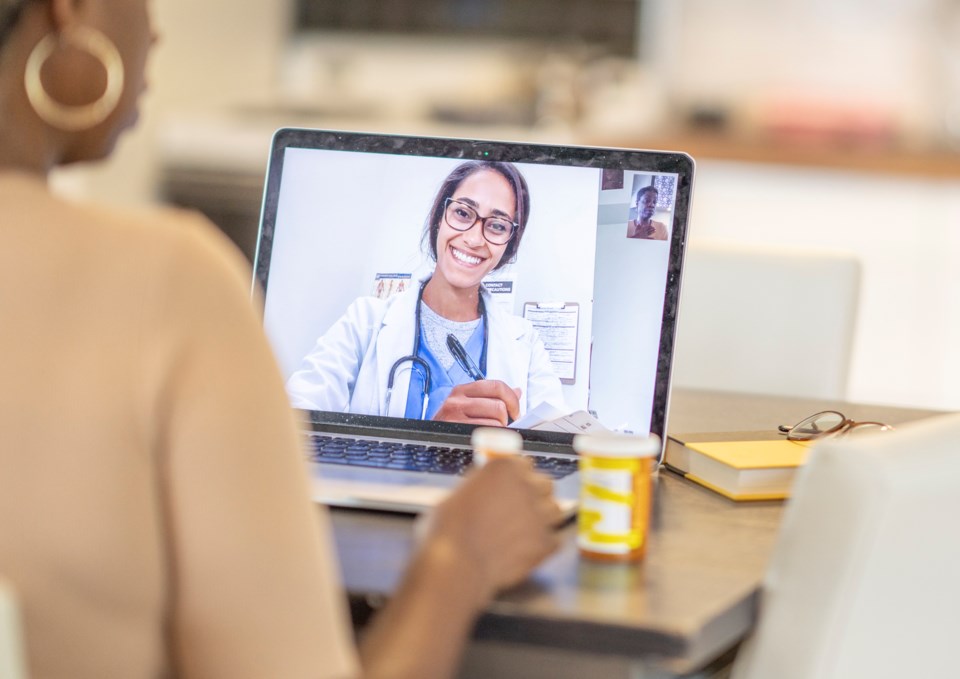The pandemic – and technology – have transformed how we meet our health-care needs.
The Benefits and Limitations of telehealth
Telehealth – phone or video consultations with physicians – have replaced many in-person clinic visits. Patients and doctors have discovered the benefits – and limitations – of virtual consults.
Many patients have welcomed the convenience of a phone call or video visit to prevent travelling to the clinic, necessitating time off school or work and a potentially hazardous wait in a reception room.
However, I’ve heard of many patients’ stories of being misdiagnosed with repeated virtual visits until they are finally examined in person.
Although a physician can diagnose some conditions with some accuracy by a patient’s description alone, the physical examination is necessary in many cases. I have found it next to impossible to diagnose the exact nature of a back injury based on symptoms and video alone.
In the same vein, skin conditions are easy to misdiagnose through photos and video. Most video lacks sufficient resolution, and many photos emailed by patients are focused on hair or objects in the background rather than the skin change of concern.
Abdominal pain is also notoriously misdiagnosed without a physical examination.
For these reasons, most family physicians are seeing patients in person for those situations where virtual health is insufficient. Most of my colleagues are therefore offering a mixture of telehealth and in-person clinic visits (where medical masks are mandatory for all adults). However, there remain a small number of physicians who are still not doing any in-person visits.
Don’t hesitate to call your own family doctor just as you did prior to the pandemic. The medical office assistant will let you know how the clinic is coordinating telehealth and in-person care.
COVID-19 vaccinations: Dr. Google/Mr. Hyde
The persuasive power of the internet is a double-edged scalpel. With an evolving pandemic and an explosion in scientific knowledge, we’ve been overwhelmed by information – some of it sound, much of it false.
I’ve welcomed frank discussions with my patients to identify their concerns, assess their personal risks and helped them decide to get their vaccinations. Very few have remained unconvinced and unvaccinated.
Patients have shared how extreme opinions have polarized families. Some grandparents have not yet seen their children’s babies born during the pandemic.
Re-engaging with your family physician
Family physicians are reaching out to their patients and reminding them that they have remained at work throughout the pandemic. Yet the public might have the impression that many clinics are closed.
I’ve reached out to my patients with regular email newsletters updating them throughout the pandemic. I’ve specifically checked up on my elderly patients (who don’t use the internet) and have chronic conditions that require regular monitoring.
On Thursday, Oct. 21, I’ll be speaking on the patient-doctor relationship, providing practical tips on communicating and collaborating with any health-care provider to achieve your personal goals.
I’ll also talk about the key information you should ask your doctor or any other health-care provider so that you can make an informed decision and give consent to medical procedures, investigations and medications, including vaccines. I’ll be reviewing the recommended age and gender-based screening tests that you may have missed during the pandemic.
To learn more and sign up for this free Zoom workshop, check out the Burnaby Division of Family Practice’s website.
Dr. Davidicus Wong is a family physician. His Healthwise column appears regularly in this paper. For more on achieving your positive potential in health, read his blog.



